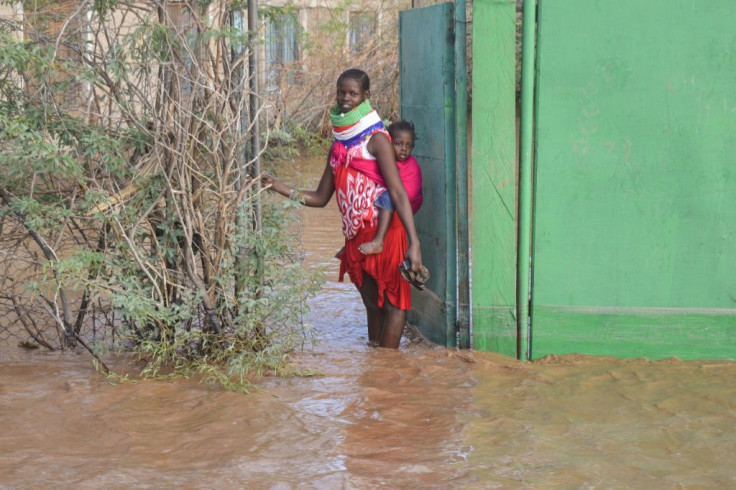East Africa Reels From Deadly Floods In Extreme Weather

A powerful climate phenomenon in the Indian Ocean stronger than any seen in years is unleashing destructive rains and flooding across East Africa -- and scientists say worse could be coming.
Violent downpours in October have displaced tens of thousands in Somalia, submerged whole towns in South Sudan and killed dozens in flash floods and landslides in Kenya, Ethiopia and Tanzania.
Rising waters have wiped out livestock and destroyed harvests in swathes of the region still reeling from severe drought. Close to a million people in South Sudan alone are affected, with growing fears of disease outbreaks and starvation.
"This is a disaster... People are left with nothing," South Sudan's humanitarian affairs minister, Hussein Mar Nyuot, said Wednesday after the government declared a state of emergency.
The extreme weather is blamed on the Indian Ocean Dipole -- a climate system defined by the difference in sea surface temperature between western and eastern areas of the ocean.
At the moment, the ocean around East Africa is far warmer than usual, resulting in higher evaporation and moist air flowing inwards over the continent as rain: the hallmarks of a "positive" dipole.
But scientists say the strength of this dipole is of a magnitude not seen in years, perhaps even decades.
These waters around East Africa are about two degrees warmer than those of the eastern Indian Ocean near Australia -- an imbalance well beyond the norm.
Australia's Bureau of Meteorology (BoM) said the dipole was the strongest since it began recording these fluctuations in 2001. Other datasets suggested a similar event in 1997, BoM added.
"It's much stronger than records have shown from previous times," Red Cross climate advisor and meteorologist Maurine Ambani told AFP.
"This one is definitely significant."
Not normal
This supercharged dipole has delivered a deluge far beyond anything normal during the "short rains" that shower the region every October.
In South Sudan, medics were forced to use rowboats to manoeuvre around an inundated hospital in Pibor, the charity Doctors Without Borders (MSF) said.
In Maban, a child on oxygen support died when water flooded a generator, MSF said in a statement. There are fears of cholera and other waterborne diseases breaking out.
In Somalia, the town of Beledweyne was completely submerged, trapping residents on rooftops and in trees. At least 200,000 had been forced to flee, some by donkey and makeshift rafts, Save the Children said Thursday.
Some parts of northern Kenya -- where the UN humanitarian agency said Wednesday at least 29 had died -- received a year's worth of rain in a matter of weeks, triggering powerful mudslides.
A landslide over the border in southern Ethiopia killed 22 people this month following 10 hours of pounding rain.
And in Tanzania, officials say 45 people have died in flash flooding this month. Though further to the south than other disaster zones, the above-average rainfall was also likely stoked by the dipole, Abubakr Salih Babiker, a climate scientist at the Nairobi-based Intergovernmental Authority on Development Climate Prediction and Applications Centre (ICPAC) told AFP.
Worse to come
Ambani said the super dipole would crescendo in November -- likely spelling more misery for the region.
"It could get worse," she said, adding that the system would shift south in coming weeks.
More bad news is already on the way for Somalia, with a tropical cyclone forecast to bear down on the semi-autonomous regions of Puntland and Somaliland in just days.
ICPAC said above-average rainfall was expected to persist until December. The positive dipole, it said, was "likely" responsible.
The last major positive dipole was in 2006, when more than 300 people were killed in region-wide flooding caused by unseasonal rains.
Conversely, a "negative" dipole -- defined by cooler waters in the western Indian Ocean and warmer temperatures in the east -- brought a devastating drought to East Africa in 2016.
Parts of Australia are currently enduring a severe drought.
Ambani said as ocean temperatures rise because of climate change, Indian Ocean dipoles could become more frequent and severe.
© Copyright AFP 2024. All rights reserved.





















